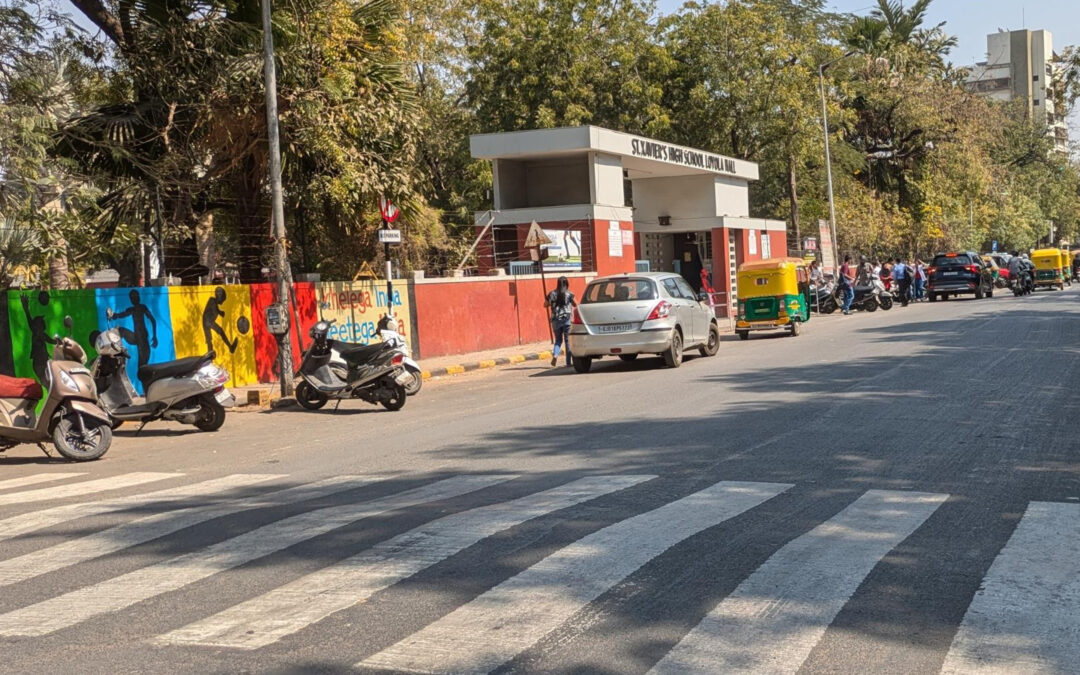This article was originally prepared by Safe India and Harpreet Singh.
India has one of the highest rates of road traffic fatalities in the world, with road crashes being the leading cause of death among children under 18. In 2022 alone, over 9,500 children lost their lives in road crashes, marking a staggering 23% increase from the previous year (India Ministry of Road Transport and Highways, 2022). In response to this urgent crisis, the Safe Zone for Schools initiative is working to transform the safety landscape for students in urban areas. Led by SAFE India and supported by ICICI Lombard’s CSR program, the initiative was implemented between September 2024 and March 2025 in eleven schools across Ahmedabad in Gujarat and Patna in Bihar. By prioritizing safer commutes for schoolchildren, the project addresses a critical need and paves the way for more secure and resilient urban environments.
A Comprehensive Approach to School Road Safety
The Safe Zone for Schools project adopts a comprehensive approach, integrating infrastructure enhancements, community engagement, and strategic partnerships.
School road safety assessments were conducted using the iRAP Star Rating for Schools (SR4S) tool, offering critical, data-driven insights to guide interventions. Key upgrades across the project schools included:
- 68+ new traffic signs including school zone, speed limit, and pedestrian crossing signs.
- 11 pedestrian crossings and 7 speed calming measures to control vehicle speeds.
- 300 meters of sidewalks built or designated for safer walking paths.
- Community barricades and drop-off zones to manage traffic congestion
One standout example is St. Xavier High School, located on Shri BL Dandwala Road in Ahmedabad—one of the city’s busiest corridors. Prior to intervention, the school entrance lacked any speed calming measures, and vehicles routinely exceeded 55 km/h.
The absence of signage and safe pedestrian crossings further endangered students. Through the initiative, low-cost yet impactful changes were made: school zone signs, pedestrian crossings, 25 km/h speed limit signages, and speed bumps were installed. These measures collectively raised the school entrance’s star rating from a low 1.0 to an impressive 3.9 stars.
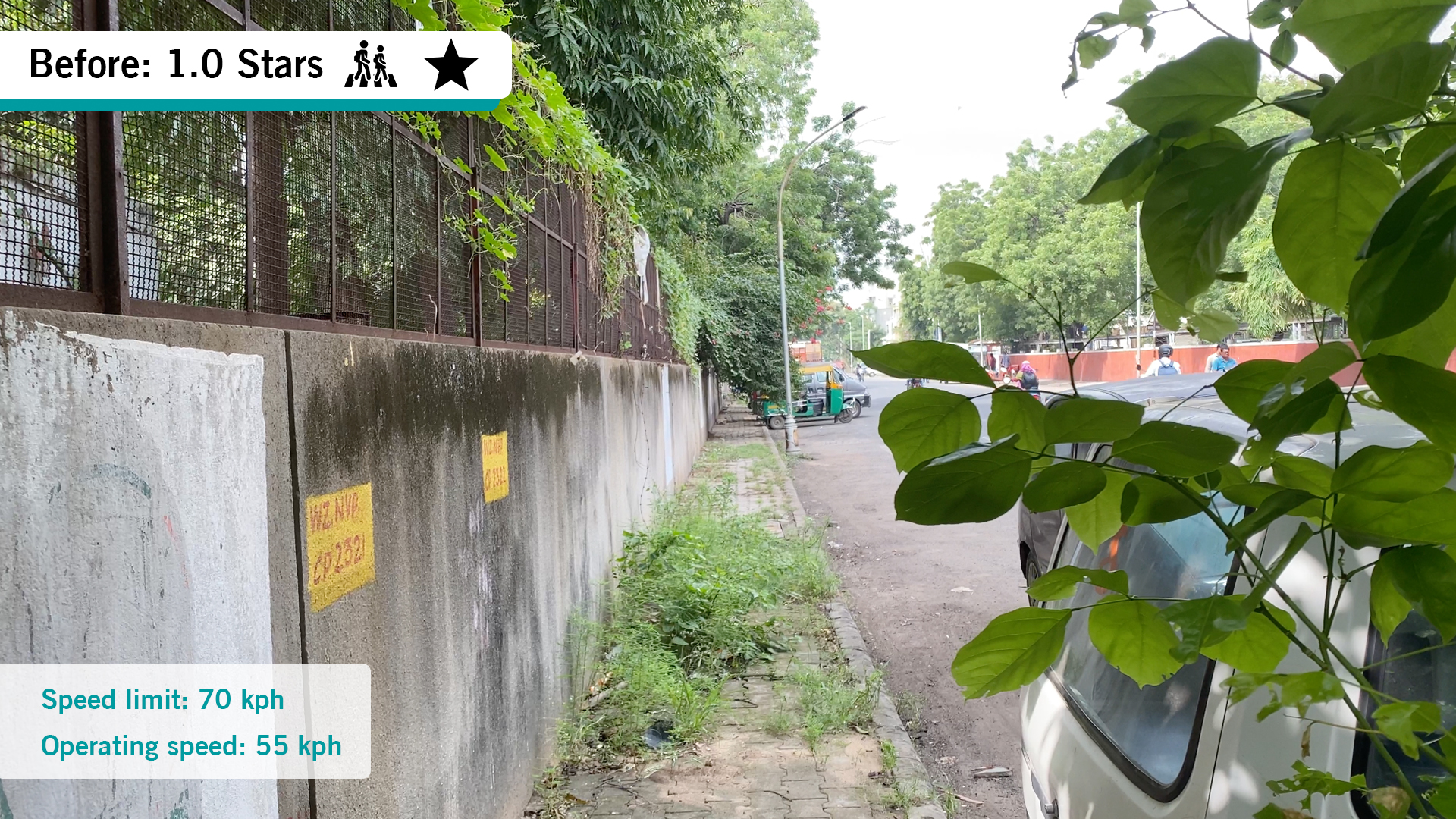
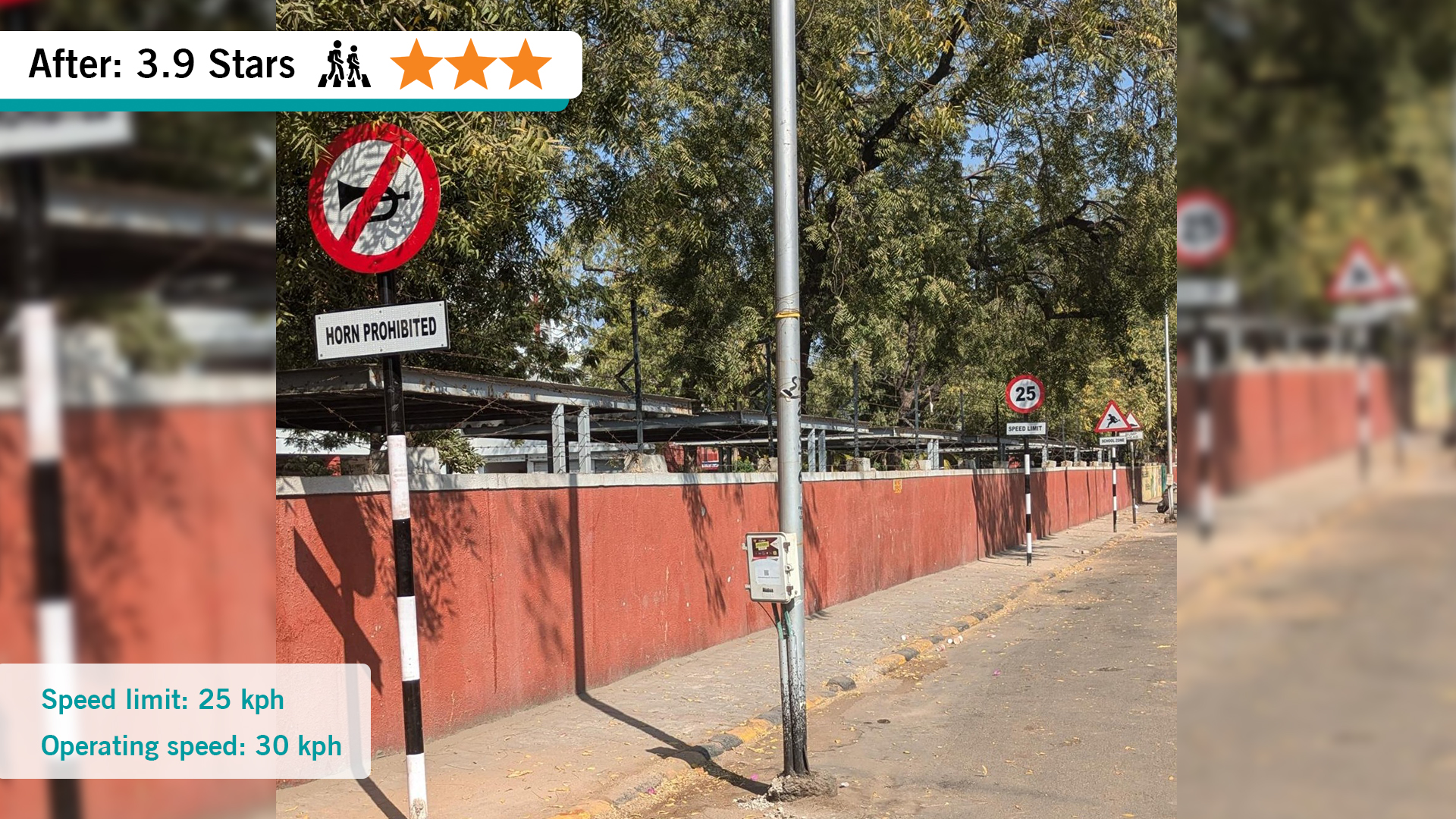
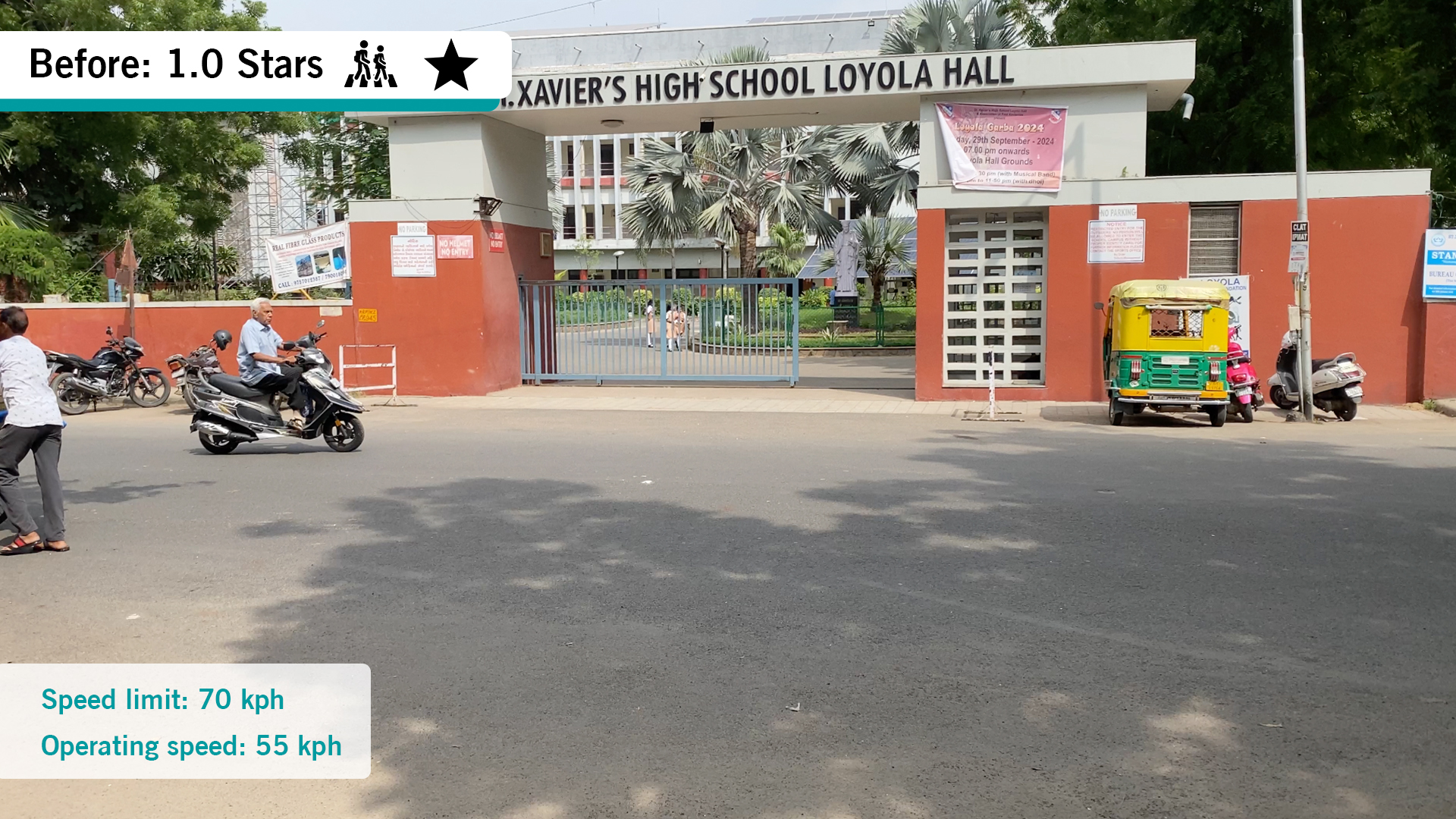
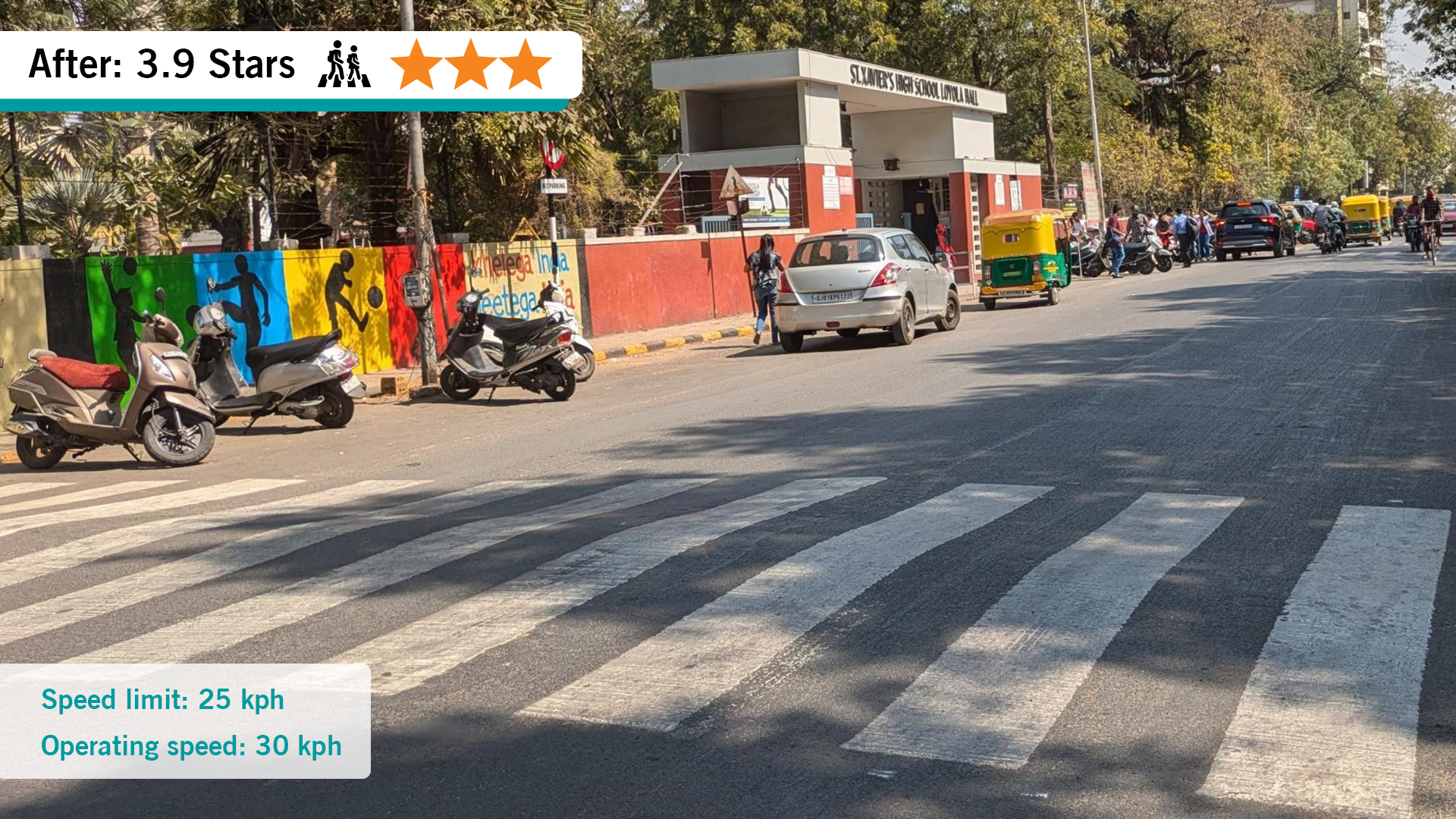
In parallel, over 3,500 students, staff, and community members were educated on road safety practices through interactive workshops, visual demonstrations, and outreach initiatives conducted in collaboration with local NGOs and traffic authorities.
Feedback from school authorities, parents, and students has been positive. Many reported noticeable improvements in traffic flow, a greater sense of safety, and increased confidence among students.
Towards a National Movement
As India advances towards the Sustainable Development Goals (SDGs), the Safe Zone for Schools initiative offers a scalable and evidence-based model for nationwide implementation.
SAFE India is now advocating for the project’s expansion into India’s twelve most accident-prone states, calling on government and private stakeholders to support efforts to protect schoolchildren across the country.
By focusing on infrastructure, education, and community empathy, the initiative is proving that targeted, collaborative action can lead to lasting change. More than a school road safety project, it is a growing movement to ensure every child has a secure path to school and a brighter future.

